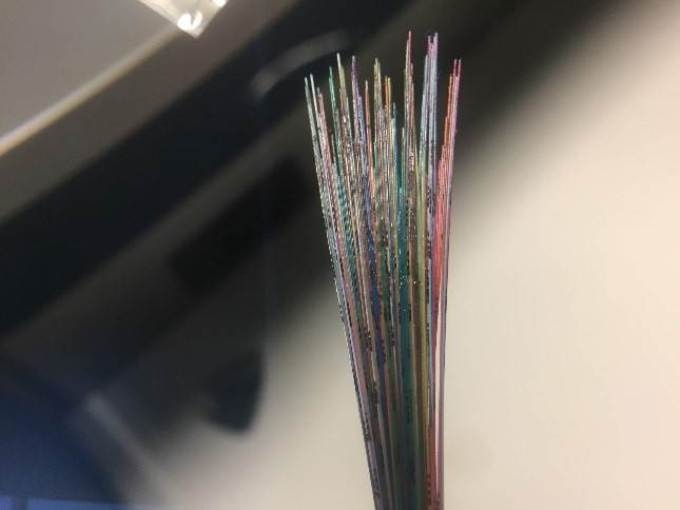Sep 11 2019
Scientists at the Nanophotonic Technology Centre (NTC) of the Polytechnic University of Valencia (UPV) have developed a new system that is based on a network of interconnected sensors. In case anomalies are identified, the system is capable of sending automated contamination alerts.
 Fiber optics deployed. (Image credit: Nanophotonic Technology Centre (NTC) of Polytechnic University of Valencia)
Fiber optics deployed. (Image credit: Nanophotonic Technology Centre (NTC) of Polytechnic University of Valencia)
Water distribution networks and also maritime and river ecosystems close to the coast can be subjected to uncontrolled contamination that can change water quality. If the water is used as a source of drinking water, this would not only endanger human health but would also endanger the stability of the aquatic ecosystems. As such, systems are being used by companies that handle water for human consumption to track water quality.
But, in maritime and river settings, the techniques that are currently used rely on a lab analysis that can involve a number of days. Therefore, real-time monitoring of the key parameters is needed to prevent an early deterioration of water quality.
And this is what was allowed by one of the recent developments made by the researchers from NTC-UPV. From their labs located in the Vera campus, and with support from the Valencian Innovation Agency (AVI), the NTC scientists were able to create a monitoring system.
This system enables constant tracking of the extent of contamination in river water through the installation of a network of underwater sensors. These sensors are interlinked through a fiber optic cable.
The fiber optic cable has been particularly developed for installation along the riverbed, and it stands out due to its durability, resistance, high transmission capabilities, as well as resistance to mechanical traction.
Probes are used by the new monitoring system to determine the quality of water at different sites of the riverbed. The system includes the subsystems required to convey the data via the underwater fiber optics cable. The data obtained is eventually transmitted to a distant station situated on the shore, where it is processed to achieve real-time measurements and can trigger contamination alarms when required.
Demonstration in Pedralba
The monitoring system was tested in the irrigation canal of Pedralba, which belongs to the Irrigation Association of the said town, and whose waters travel from the Túria river.
The demonstration has made it possible to verify the correct operation of the developed systems, and has laid the foundations for the development of a network of communications with fibre optics placed on the riverbed that makes it possible to continuously monitor, in the long term, the water quality parameters of a large number of locations.
Roberto Llorente, Researcher, Valencia Nanophotonic Technology Centre
Valencian company Fibernova S.L. also helped in developing the system, particularly in deploying and handling the network.